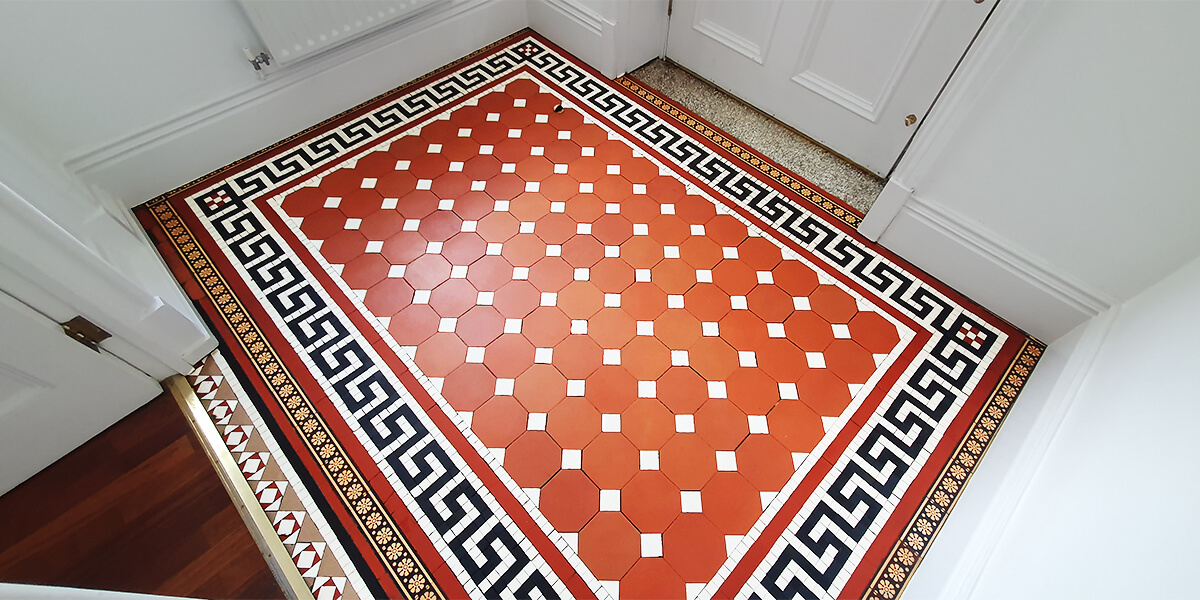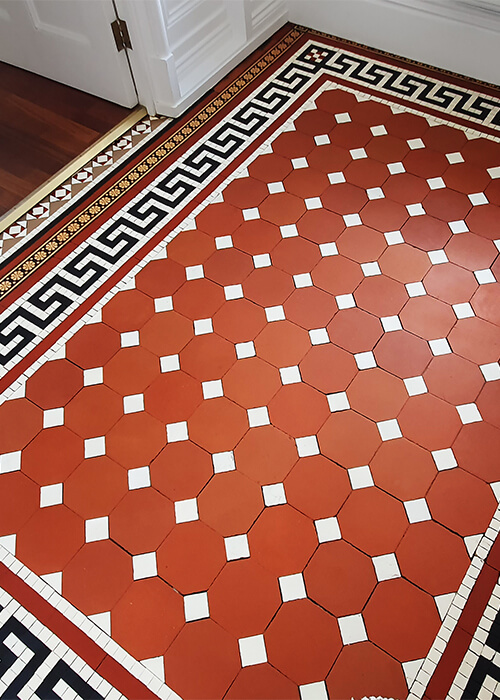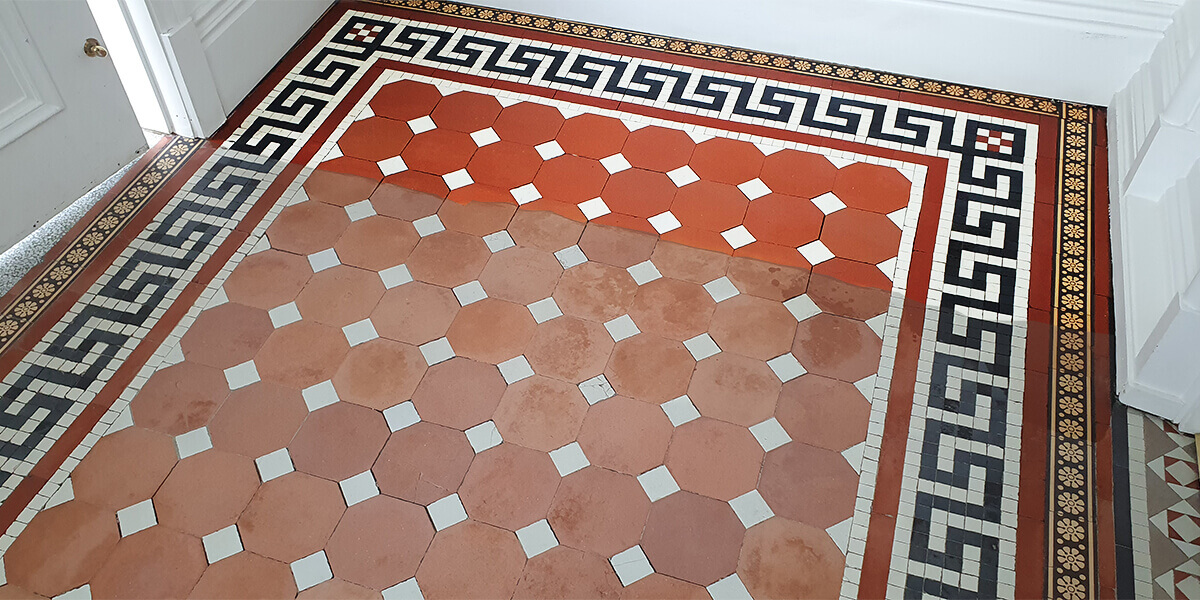Victorian tile sealing in Gosforth.
After years of neglect Victorian tiles lose their original colour and become very dull. The Victorian Tile Restorer can revive the tiles back to their former glory.
This was one of four main entrance vestibules that have now been restored. At the time of restoration, these had become worn, faded and colourless.
The owners commissioned Tony the Victorian Tile Restorer to restore this beautiful floor back to its former glory, and he did a great job.

Victorian tiles can add personality and elegance to any room, but they require proper care in order to maintain their beauty. The right sealer can make cleaning your tiles a breeze, so that they look perfect for years to come.
Why Seal and Colour-Enhance Your Tiles
There are many colour variations of Victorian tiles, including red, grey and buff. Each colour has its own unique history, and the best way to seal them depends on the type. This type of tile is usually made from fired clay, making it durable and long-lasting. However, they can become stained or discoloured over time, so adding sealer will bring out their original appearance while protecting them against water, dirt and grease damage. It comes with a 10 year guarantee as well!
How Does Enhancing Sealer Work
In short: The sealant product works by scattering light, which then reflects back to us and appears lighter. It's just like how wet tiles reflect light, only in reverse.
How to Seal Victorian Tiles
Applying tile sealant is a complicated process, but it's not difficult with Tony. First, the coat of sealant is applied in sections to the tiles- by hand and slowly, to give enough time for it to soak in. This ensures complete penetration and that it won't peel off or wear away easily. The sealant is then buffed into all the nooks and crannies by hand again to make sure that any excess material is gone- this creates a vibrant and even finish. Please remember: colour enhancing tiles can be tricky and inexperienced do not attempt this task if you're not skilled at sealing tiles yourself.
How to Keep on Top of Your Victorian Tiles
Victorian tiles are beautiful, but without proper sealant, they can get dirty quickly. Professional sealing finishes the job, but you'll need to keep your floor clean on a regular basis to avoid these problems. There are a few steps you can take after restoration that will help prevent dirt from building up and damaging your floor once more:
Dirty tiles can result in grime build-up, scratches on the sealer, and damaged flooring. Therefore, it's important to keep your tile surface clean as best you can.
Tiles can be made out of many different materials. However, they all require the same cleaning care. By keeping your tiles clean, you'll protect them from damage caused by sand and grit. By removing dirt and grit, you'll also make it easier to maintain the tiles' original appearance.
It's important to always use a PH-neutral cleaner and soft microfiber cloths. Lightly spray the tiles with water, making sure not to saturate them. Let them dwell for a minute or two, and then wipe away the dirt. If you're feeling energetic, then buff again with a clean cloth.

Have your tiles professionally cleaned & sealed by a master craftsman with a 10 year guarantee against fading, water, grease and oil staining.
Deep Cleaning
Polishing
Restoration
Pattern Matching
Tile Sourcing
Substrate Replacement
Tile Replacement
Colour Enhancing
Tile Sealing
Get in touch with Tony for a friendly chat using the contact form, and he will discuss your requirements and arrange a free site survey and Estimate.
History of Victorian Tiles
One of the earliest uses of Encaustic and geometric tiles was in public buildings. They can be found in many churches and museums, notably in the Victoria and Albert Museum. Eventually, they became popular as a flooring for hallways in Victorian houses, making a great first impression on guests and providing durability in a residence.
In the past, most property owners neglected their Victorian tiled floors because people grew bored of them. People tried new flooring materials and fashion trends, like linoleum, that left old flooring forgotten. Some owners covered the tiles with cement screed or glue on top of other flooring materials to keep the tiles from moving. These coverings prevent moisture from getting through, so they should be removed before more damage occurs. Other causes of damage include laying carpet where gripper rods are nailed into the floor! Plumbing and electrical changes also caused problems involving lifting up some tiles to make way for new construction materials.
Victorian Encaustic and geometric floor tiles were often laid on suspended timber floors with a lime mortar screed or on a substrate made up of rubble and lime mixed in varying proportions from the waste during building construction of the property. These forms of substrate have, on the whole, survived the test of time. There are instances however when the substrate has given way in certain areas of the floor resulting in cracks in tiles or raising and sinking of parts of the floor. In other cases sloping can be observed whereby underfloor timbers have moved against supporting brickwork.



